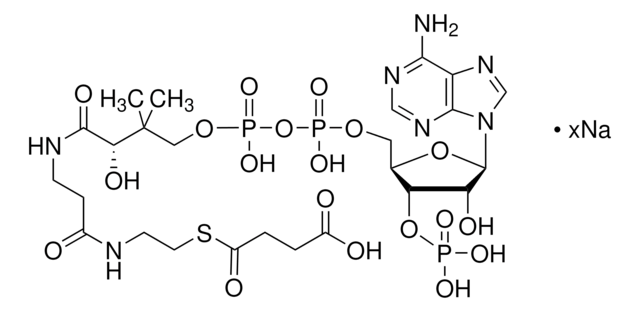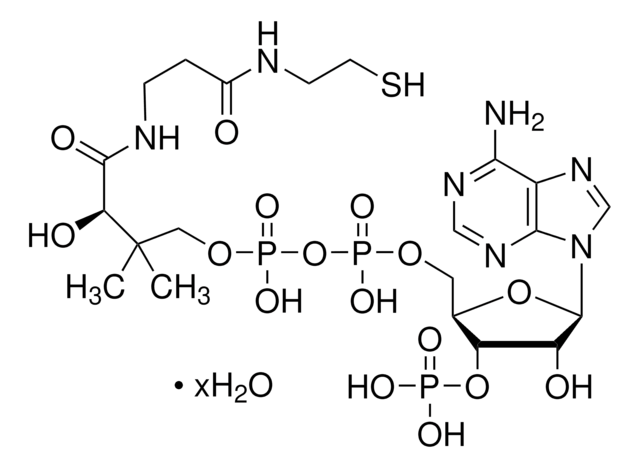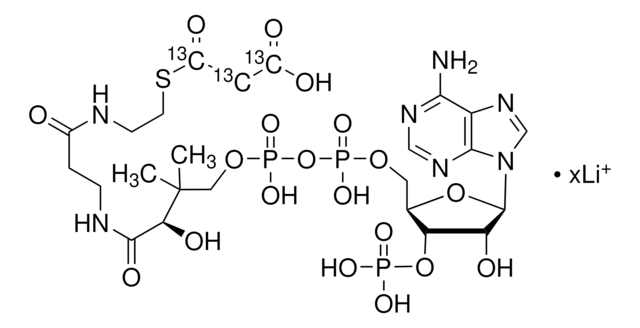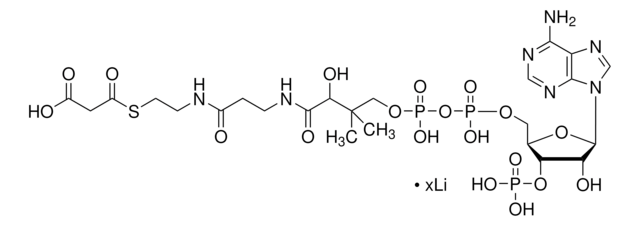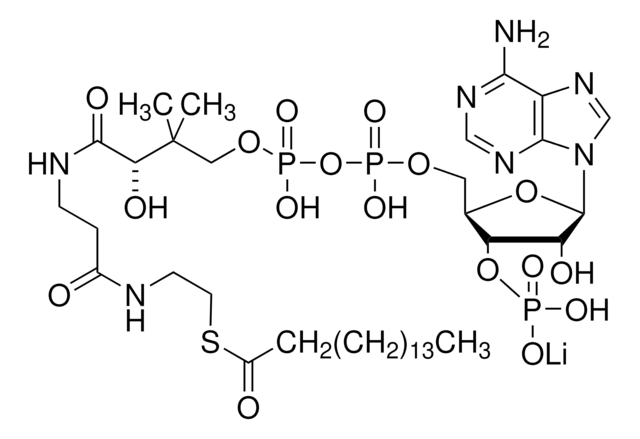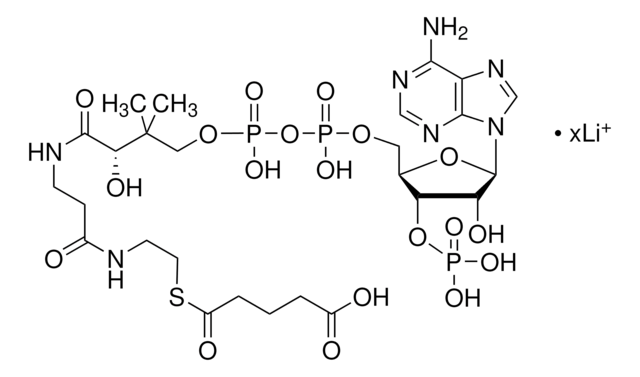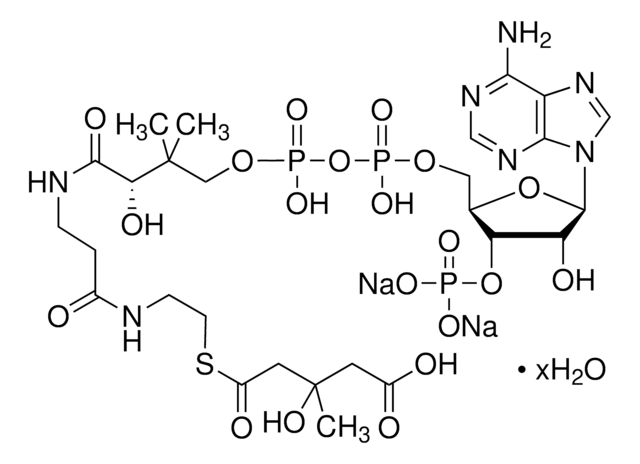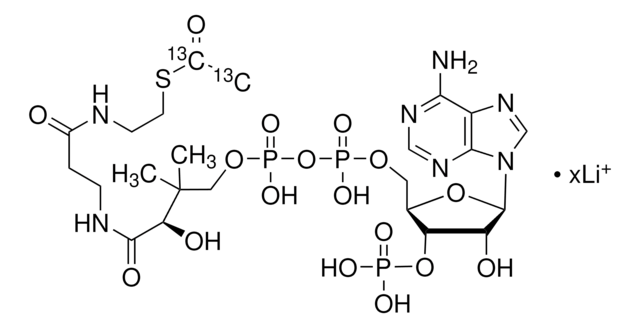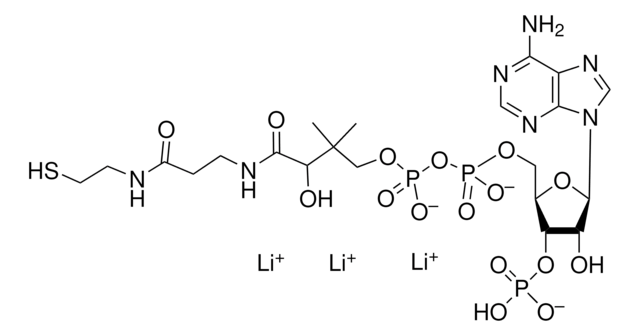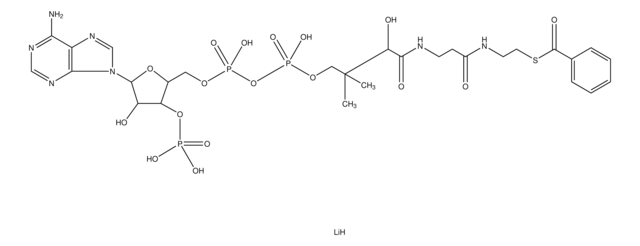M4263
Malonyl coenzyme A lithium salt
≥90% (HPLC)
Synonym(s):
Malonyl CoA lithium salt
About This Item
Recommended Products
Assay
≥90% (HPLC)
form
powder
solubility
H2O: soluble 50 mg/mL protein, clear, colorless
storage temp.
−20°C
SMILES string
[Li].CC(C)(COP(O)(=O)OP(O)(=O)OCC1OC(C(O)C1OP(O)(O)=O)n2cnc3c(N)ncnc23)C(O)C(=O)NCCC(=O)NCCSC(=O)CC(O)=O
InChI
1S/C24H38N7O19P3S.Li/c1-24(2,19(37)22(38)27-4-3-13(32)26-5-6-54-15(35)7-14(33)34)9-47-53(44,45)50-52(42,43)46-8-12-18(49-51(39,40)41)17(36)23(48-12)31-11-30-16-20(25)28-10-29-21(16)31;/h10-12,17-19,23,36-37H,3-9H2,1-2H3,(H,26,32)(H,27,38)(H,33,34)(H,42,43)(H,44,45)(H2,25,28,29)(H2,39,40,41);
InChI key
OPIJLICRFQMMJH-UHFFFAOYSA-N
Looking for similar products? Visit Product Comparison Guide
Related Categories
Application
- in Krebs Ringer bicarbonate medium for preincubation of trypsinized and re-suspended fibroblast for fatty acid oxidation assay
- in HEPES (4-(2-hydroxyethyl)-1-piperazineethanesulfonic acid) buffer used for scintillation proximity assay for fatty acid synthase
- as an internal standard in the reaction mixture used for succinyl-CoA ligase assay
Biochem/physiol Actions
Storage Class Code
11 - Combustible Solids
WGK
WGK 3
Flash Point(F)
Not applicable
Flash Point(C)
Not applicable
Personal Protective Equipment
Choose from one of the most recent versions:
Already Own This Product?
Find documentation for the products that you have recently purchased in the Document Library.
Customers Also Viewed
Articles
Information on fatty acid synthesis and metabolism in cancer cells. Learn how proliferatively active cells require fatty acids for functions such as membrane generation, protein modification, and bioenergetic requirements. These fatty acids are derived either from dietary sources or are synthesized by the cell.
Our team of scientists has experience in all areas of research including Life Science, Material Science, Chemical Synthesis, Chromatography, Analytical and many others.
Contact Technical Service

